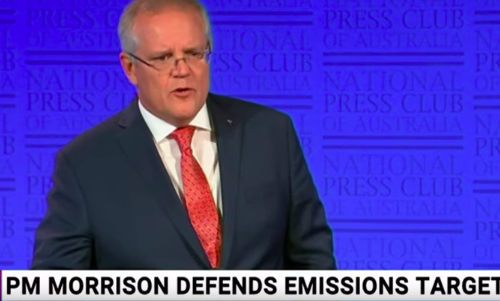
Below is the transcript of Prime Minister Scott Morrison’s address to the National Press Club on January 29, 2020.
PRIME MINISTER: Thank you very much Sabra, and thank you for all attending here today. I am particularly conscious, particularly in this city, where we have had this most recent, again, reminder of the terrible bushfire season we have had with the bushfires coming so close as they did last evening. And I extend all of my sincere empathies to those particularly around the capital today on what has been a difficult night.
Can I also acknowledge the many colleagues I have here today, too many to mention. It’s wonderful to see you all but particularly it’s wonderful to have my wife Jenny here and it’s great to see you here, love.
Can I begin by acknowledging the Ngunnawal people, their elders past, present, and particularly the future, those who are emerging.
To any veterans here today, and to our servicemen and women around the country, let me again say to you on behalf of a very grateful nation: ‘Thank you for your service’.
For the families who have lost loved ones through this terrible bushfire season, your sorrow hangs heavy on our nation’s heart.
And that heart is extended also to all those who now face the daunting task of rebuilding homes, livelihoods, businesses and local communities. We’ll be with you for the long haul.
Many Australians – as well as our loyal friends from overseas who are standing here with us – remain on those front-lines today, some 75 or so fires burning around the country today.
Our brave firefighters. Our emergency services workers. Our volunteers.
Our soldiers and reservists, our carers and mental health specialists, local community leaders and public servants, as well as the networks of civil society engaged in all manner of very practical, helpful, loving tasks – from delivering food to rescuing and supporting recovering wildlife.
Amidst this devastation, it has been humbling to see Australia at its best.
In recounting the stories of their selflessness, as I did on Australia Day, my message was very simple.
This is the greatness of Australia. This is the strength of Australia.
This is why as a people we always overcome and prevail.
Australia is strong but we must become even stronger.
We live in a world of increasing global uncertainty, which the current Coronavirus outbreak only serves to reinforce, which I have already addressed earlier today so I won’t be speaking on that topic in great detail today, but if you wish we can deal with those matters on further questions afterwards.
Strategic competition, technological change, a recasting of the global economy, pressures on global financial systems and escalating environmental challenges.
And at home, a growing and ageing population, a stubborn and devastating drought in a vast continent of increasing environmental extremes, an economy that is making the leap to the next phase of our prosperity, and any leap carries risks and challenges and a society where too many Australians take their own lives, symptomatic in so many ways of the pressures and corrosive forces present in so much of modern day life.
This year, our Government, we will continue to build an even stronger Australia.
By keeping our economy strong to guarantee the essentials, those services that Australians rely on, like the delivery of the National Disability Insurance Scheme and lifting our investment in aged care.
By keeping Australians safe, whether from strategic threats, keeping our borders secure, safeguarding their health and well-being, or protecting us from terrorist attacks and the impact of natural disasters.
And by keeping Australians together. Our most precious asset – as families, as individuals, as communities and as a nation. Respectful and tolerant of each other, our differences, committed to each other as stewards and custodians of our collective future.
These were the priorities I set out when I became Prime Minister. They remain lock-firm my priorities today and going forward.
Sound economic management puts you in a position to deal with long-term challenges and as well as dealing with crises when they hit.
While we don’t yet know the impact on economic activity of the bushfires let alone Coronavirus, nonetheless, the Government was quick to commit an additional $2 billion to support communities and individuals who have felt the impact. Initial and additional to the recovery assistance that goes on as normal course of events.
This includes not only emergency relief and grants for farmers and small businesses in affected areas, but importantly $76 million in practical assistance to support our tourism industry.
Our ability to do this is not straightforward and didn’t happen by accident. Our ability to do this without putting up taxes or levies as has occurred in the past and while retaining our AAA credit rating and our path to surplus, is the dividend of our Government’s enduring commitment to fiscal discipline. That’s what it’s about. That’s why we’ve been so obsessed. Because when the bad times hit and the crisis come, you must be prepared. And we have gone into this crisis in that way.
So while the response to the bushfire crisis is significant in scale, we have done it in a way that remains consistent with our medium term fiscal outlook, as the Treasurer has been reassuring people.
And while placing the priority, though, on the human cost rather than the fiscal cost. That’s been our focus.
The Budget position for 2019-20 will be updated in May and it will take into account, as usual, under the keen eye and stewardship of the Finance Minister and the Treasurer, it will take into account the additional expenditure that we’ve outlined since the mid-year statement, as well as the broader economic impacts of these disasters as best as they are known at that time.
Importantly, we’re not just focused on the immediate response, something I was quick to reassure people in the areas that I have toured and visited.
We are working with state and local governments, with businesses, the not-for-profit sector to develop and deliver locally-driven Economic Recovery Plans. Like rebuilding the livelihoods of orchardists in Batlow, where I was with the Deputy Prime Minister just the other day.
I want to particularly commend Minister Littleproud on the great work he has done leading our effort in response to the bushfire crisis and I particularly also recognise Andrew Colvin, called back into service, who is doing a tremendous job and we thank you, Andrew, for your commitment to our nation.
Now, aiding this effort are positive signs, though, in our economy going into 2020 that the fundamentals of our economy are strong and in good shape.
Key global risks have eased following the ‘phase one deal’ between the US and China and the reduced uncertainty over Brexit, although the effect of the recent Coronavirus outbreak does remain uncertain.
Domestically, we have seen encouraging recent data that shows that the underlying resilience and strength of the economy is there. Retail sales figures for November were the strongest in two years and the housing market continues to stabilise, which underpins confidence.
The labour market is also performing well, continues to, with over 260,000 jobs added in 2019. More than half of these were full-time, while our unemployment rate remains at a low of 5.1 per cent.
More than 1.5 million jobs have now been created since our Government was first elected.
And the number of unemployed persons, importantly, is lower today in Australia than it was at the last election, the election before that in 2016 and the election before that in 2013.
This year we will continue to roll out the economic plan that has delivered those dividends:
- maintaining our disciplined approach to financial management
- keeping taxes low, with tax cuts for small and medium-sized businesses and continued tax relief for around 10 million Australians
- delivering on our record investment in transport infrastructure, including the over $2 billion that we announced we brought forward over the next 18 months
- expanding access to new export markets for Australia, with a special focus on the UK post-Brexit and the European Union, where the Finance Minister has just returned from overseas where he has been pressing that case
- busting regulatory congestion that is holding up business investment
- reducing unnecessary bureaucracy in our industrial relations system, while working to pass the Ensuring Integrity and Proper use of Worker Benefits laws, and
- building on our $585 million Skills Package through Minister Cash that we announced last year and the creation of new bodies such as the National Skills Commission. It is a priority for us this year.
Skills reform will be a priority for COAG discussions in March and beyond and I want to thank the states and territories, premiers and chief ministers, for their commitment to that agenda.
Our $50 million commitment to TAFE Revitalisation will deliver infrastructure projects, refurbish facilities, and purchase specialist training equipment. That has now being authorised.
The Australian Skills Quality Authority (ASQA) is being reformed to improve its governance, accountability and engagement with the sector.
And we’re making it easier for many VET students to access courses by increasing the size of loans available for around one-quarter of all eligible courses. That was signed off last week and I will expand further on all of these issues and the economic plan on other occasions.
A strong and resilient nation, though, can only take action with a strong economy. And in particular to protect the safety and security of its citizens.
As we look into this year, our Government will remain steadfast in defending our independence and our sovereignty as a nation.
We will not stand for foreign interference or allow our borders to be compromised. We will do everything possible to protect Australians from terrorists as we have done so vigilantly under Peter’s leadership at Home Affairs. Australians can be kept safer by an economy that is strong.
And we will counter the evil ideologies that underpin those terrorist attacks from whichever evil ideology it stems from.
And we will stand with our allies and partners in support of an open, peaceful and prosperous Indo-Pacific, with ASEAN at its core.
We will work to preserve a balance in our region that keeps the skies and sea lanes open, upholds international law, and reinforces the independence and sovereignty and indeed our success of our neighbours.
This is essential to our own prosperity and security.
As part of our Step-up, we will continue to strengthen our commitment to our Pacific family, who themselves have opened their hearts to us in a very touching was during this most recent bushfire crisis.
These bonds have never been stronger between Australia and our Pacific family.
We will continue to invest in our intelligence, security, diplomatic and other border protection agencies that keep us all safe each and every day.
This year our Government will also achieve that through realising our goal to restore the defence budget back to 2 per cent of GDP – a commitment we made back in 2013 and will be realised this year when the Treasurer hands down this year’s Budget.
However, this summer has reminded us that our national security is also about our preparedness, responsiveness and resilience to natural disasters and the environment we will live in today, over the next decade and well beyond.
Given the significance of these events and the issues that they have raised in recent times, this is where I would like to spend the majority of my focus today.
It has long been the case that state and territory governments have primary responsibility for protecting life, property and the environment within their borders. They perform most of the functions essential for emergency management and community safety and they do a great job.
This includes maintaining the agencies that provide emergency services – police, fire, ambulance and medical services.
This should remain the case. The incredible skill and bravery of our state fire services has saved so many lives over this summer, so many homes and I am full of admiration for all of their efforts and their leadership.
To date, the role of the Commonwealth has been limited in responding to natural disasters has been limited to responding to requests for assistance from state governments. They judge the time and form of support needed in making that request.
But I must say, the scale of the bushfires this season – not least their simultaneous reach across many borders – has demonstrated to me the limits of these arrangements.
As you know, I took the initiative for the first time ever as a Prime Minister to change the Defence Force posture from ‘respond to request’ to one of ‘move forward and integrate’ and to issue a compulsory call out of our Defence reservists in response to a domestic natural disaster.
I thank the states for their cooperation with this decision and stress again that it was not made because of any questioning of state efforts or preparedness.
In practical terms, this meant our defence forces were no longer waiting for specific requests for assistance, but they mobilised and moved forward into disaster affected areas at their own initiative, integrating wherever possible with local authorities to render the assistance where they could.
And the demonstration of the practical difference between ‘respond to request’ and ‘move forward and integrate’ is this – in just a few short weeks our defence deployment escalated from under 900 to more than 6,500. That made a big difference.
This constituted one of the largest domestic ADF operations in our history, with more than 13 fixed wing aircraft, 20 rotary wing platforms and three naval vessels all supporting that effort.
The ADF effort, the defence effort, multiplied and it amplified the effectiveness of state disaster response agencies, not supplant them, and it has played a critical role in getting fast and effective disaster relief where it is needed most.
These decisions though, I stress, were not taken lightly and they were not rushed into.
As I’ve said before, I have been very conscious of testing the limits of constitutionally defined roles and responsibilities during this bushfire season.
But I believe there is now a clear community expectation that the Commonwealth should have the ability to respond in times of national emergency and disasters, particularly through deployment of our defence forces in circumstances where the life and property of Australians has been assessed to be under threat at that scale.
I note that this was not something contemplated or recommended to the Commonwealth Government before this bushfire season, nor was it requested by any state or territory government.
After this fire season and before the next one, this is an area where we will need to get some clarity and we need to make some decisions, make some calls on this, including changing the law where and if it is necessary.
I therefore flag the following as issues to be considered in the wake of these events:
- The legal framework that would allow the Commonwealth to declare a national state of emergency, currently doesn’t exist, – with clear authorities and appropriate safeguards for Commonwealth action on its own initiative, including the deployment of our defence forces;
- The legal interface with the states and territories on responsibilities when it comes to preparation for, and response to, natural disasters and emergencies of national scale;
- And an enhancement of a national accountability framework for natural disaster risk management, resilience and preparedness. This should include the setting of targets and transparent reporting on key actions, with enhanced national standards where necessary. We’ve got to be comparing apples with apples, we’ve got to be using the same methodologies.
An enhanced, and more proactive role for our defence force in response to domestic natural disasters will have implications for our force structure, for it’s capability, development, its command, its deployment and the training of our defence forces. So I don’t put this forward lightly.
There is no doubt we have learnt lessons from past fires and other natural disasters.
One of those has been the evacuation procedures that we’ve learnt from previous fires which I know has saved countless lives. But too often, the findings from these enquiries get forgotten. They get de-prioritised over time. One of the key tasks of a Royal Commission will be to audit the implementation of previous recommendations, drawing on the work that has already been done in this area. So they can get about that fairly quickly, it won’t have to take them too long.
And as the years pass, though we note that the bush grows back and fuel loads increase, people move in, in still larger numbers to live in fire-prone areas and dangerous fires occur again in a cycle which we must break.
We must continue to learn from this fire season so we are better prepared for the next one because there of course will be one. Whether that be the deployment of the defence forces, local hazard reduction, access to resources such as aerial firefighting equipment, consistency of disaster recovery arrangements or resilience in the face of a changing climate. And we must learn, as I discussed only last week, from the Indigenous Australians and their ancient practices and how to improve our resilience to these threats. They know more about this than we ever could and they stand ready to work closely with us.
But we must also look further ahead and prepare for and adapt to the environment and the climate we are going to be living in, and acknowledging what that is.
This summer is the latest chapter in the often harsh realities of living in this amazing continent.
Building our national resilience means building our ability to resist, absorb, accommodate, recover and transform in the face of such events – and this includes the effects of longer, hotter, drier summers.
Practical action on mitigation through reduced emissions needs to go hand-in-hand with practical action on climate resilience and adaptation.
Locally, when it comes to practical safety of people living in bushfire zones, hazard reduction is even more important than emissions reduction.
We need to seriously engage with issues like how we manage native vegetation, how we allow land-owners to clear asset protection zones on their property, where they’re stymied. Where we allow structures to be built and how, the materials and standards they are built to, and where and when hazard reduction burns, or other hazard reduction practices are carried out. All these considerations have a direct impact on the safety of Australians living in this climate, and in this bush environment.
That is why I have said it is important that we have greater transparency and accountability nationally about action being taken to reduce these risks and manage these going forward in a changing climate.
All of this is the climate action we need now.
Building dams, developing new crop varieties, improving planning for natural disasters is climate action now.
The science tells us the effects of emissions already in the atmosphere will continue to be felt in coming decades, even under the most ambitious global emissions reduction scenarios.
Mitigation and adaptation both contribute to resilience – mitigation reduces the risk; adaptation is how we prepare for the climate risk we cannot reduce.
We know our farmers are on the front line of resilience, I saw it first hand when I was with them only yesterday, continuing to battle this devastating drought in the face of more frequent and severe droughts they have led the world in the development of drought resistant crops.
That’s climate action now.
The $5 billion Future Drought Fund will support practical, resilience building measures, including small-scale water infrastructure and improved information on local climate variability, sustainable stock management, soil and water regeneration and the like.
Climate action now.
Our Drought Resilience Funding Plan, the framework to guide funding decisions for projects and activities, is expected to be tabled in Parliament by March of this year.
The National Water Grid will guide investment in new dams and distribution networks, and ensure a comprehensive, integrated plan to help drought-proof our water supply for farmers and regional communities.
The new Emergency Response Fund will provide up to $200 million each year to support not only immediate response activities, but also recovery and preparedness for future disasters.
The Reef 2050 Plan, backed-up by $1.9 billion in Commonwealth funding, is also among initiatives we are taking to build future climate resilience.
Climate action now.
We also have a track record of investing in the technology of resilience, science of resilience through agencies such as the Bureau of Meteorology, the CSIRO and the Bushfire & Natural Hazards CRC.
And moving forward, I am asking the CSIRO, supported by an expert advisory panel chaired by our Chief Scientist who is here today and doing an amazing job, Dr Alan Finkel, to bring forward recommendations to Australian Governments, all of us, on the further practical resilience measures, including buildings, public infrastructure, industries such as agriculture, and protecting our natural assets.
I will be discussing resilience measures with the states and territories at COAG in March, and I know they’re looking forward to that discussion including to ensure the Commonwealth Government’s investment through the National Bushfire Recovery Agency will be in assets that are built to last, built to resist, built to survive longer, hotter, drier summers. Building back better for the future.
Now we also acknowledge the need to take action to reduce global emissions, to mitigate the risk of climate change. It’s not in dispute.
Of course we know that Australia, on its own, cannot control the world’s climate, as Australia accounts for just 1.3 per cent of global emissions. We also know that no fire event can be attributed to the actions of any one country on emissions reduction.
But Australia must play its part and we are playing our part. Taking action is agreed.
Our action though, is a balanced and responsible emissions reduction plan to reduce emissions by 26 per cent through to 2030 that we took to the Australian people at the last election.
Our target is comparable to countries like Japan, New Zealand and Canada – especially when account is taken of such factors as our geography, our population density, growth and economic and comparative advantage.
It’s a target higher than every other major economy in Asia.
A target that will see our emissions per capita fall by half. Half.
Our 2030 target is set, and we intend to meet it and we intend to beat it.
Just as we previously beat our Kyoto 1, and Kyoto 2 targets, when all the critics said we wouldn’t. And are saying so again about 2030.
And if legitimate carry over credits are not necessary, then even better. However, let’s not forget on this point, it was the Labor Government that made carry over credits a condition of their signing up to the second commitment period of the Kyoto Protocol. So I’m not copping lectures from that lot.
And we will do this consistent with the commitment we gave to the Australian people:
- without a carbon tax that will slow our economy,
- without driving up electricity prices, which I note by the way are down 3 and a half per cent today on the latest inflation figures, particularly, and without shifting jobs and without sending emissions offshore, and
- without leaving behind Australians, so often ignored, so often left out, particularly in regional areas, who are working in sectors such as agriculture and mining and some appear to accept as casualties of this process. I don’t, and neither does my government.
One of the major vehicles for driving this agenda forward will be bilateral agreements on energy and emissions reductions with each state and territory, and that will begin with New South Wales, and I’ll have more to say about that soon.
But these agreements will focus on keeping energy prices affordable, improving the reliability of the electricity grid and driving down emissions while we do so, and I commend Angus Taylor for the great work he’s been doing in this area.
Central to this agenda is getting access to our domestic gas supplies. We need to get the gas from under our feet. There is no credible energy transition plan for an economy like Australia in particular, that does not involve the greater use of gas as an important transition fuel.
There are plenty of other medium to longer term alternative fuel arrangements and prospects, but they will not be commercially scalable and available for at least a decade, is our advice.
Gas has a critical role to play as a backstop to our record investment in renewable energy generation. It helps ensure we can keep the lights on when the wind isn’t blowing and the sun isn’t shining.
Sweating our existing coal fired power generation assets will only take us so far.
Gas can help us bridge the gap while our investments in batteries, hydrogen and pumped hydro energy storage bring these technologies to economic parity with traditional energy sources.
So right now, we’ve got to get the gas.
Our focus is also squarely on harnessing the power of new technology and allowing natural markets to operate, together with the desire and ingenuity of Australians to reduce emissions while keeping the economy strong.
Technology is key to driving down costs and identifying new economic opportunities for Australia, particularly for technologies providing storage and back-up to the electricity, industry and transport sectors.
This includes our $10 billion Clean Energy Finance Corporation driving down the cost of our renewables, our $1 billion Grid Reliability Fund to catalyse investment in battery and pumped hydro energy storage, our $500 million hydrogen strategy to position us as a key player in the emerging hydrogen economy, which is a key issue of bilateral discussion with our friends in Japan, and our soon-to-be-released electric vehicle strategy to support the modernisation of our transport fleet.
This is all climate change action now.
In the waste sector, Australia’s emissions have already fallen by 25 per cent since 2000.
We are world leaders in renewable energy. More than 2.2 million Australian’s have rooftop solar panels – the highest uptake in the world.
And 2019 saw a record amount of renewable capacity installed, 24 per cent above the previous record set in 2018 – and electricity generated from renewables is forecast to grow again by a further 26 per cent this year. This year.
Based on Bloomberg’s New Energy Finance data, in 2019 Australia’s per capita investment in renewables- sorry Mathias- was more than triple the per capita investment of countries like Germany, France, and Denmark.
SENATOR THE HON. MATHIAS CORMANN, MINISTER FOR FINANCE: I’ve been making that point all week!
PRIME MINISTER: He’s been making that point in Europe all week, Mathias says, and he’s right to do so. He’s right to do so. We’ve got a great record here. We’re achieving great things in this country when it comes to renewable technologies and renewable energy. And I won’t stand by and see others talk this down for some other purpose or agenda. We’re doing the right thing here, and we’re going to keep doing it.
To guide Australia’s future technology investments, the Government will next month release for consultation a new technology roadmap charting the way forward in areas such as:
- Hydrogen,
- Solar and batteries,
- Transmission and networks,
- Large-scale energy storage, and
- Carbon capture and storage.
So our climate action agenda is a practical one, it goes beyond targets and summits and it’s driven by technology, not taxation.
This is important as there are real weaknesses in the current global action frameworks on emissions reduction.
Current frameworks and agreements globally, actually endorse massive increases in emissions from some of the world’s largest and growing economies.
So understandably this tests the patience of people in countries like Australia, particularly in regional areas, who ask the question why do their jobs have to be exported and their incomes exported to other countries, while global emissions under those arrangements are allowed to rise for so many.
These contradictions and limitations need to be acknowledged.
The atmosphere doesn’t care where emissions come from. Emissions do not have accents.
The only thing that matters is the cumulative impact of all countries’ emissions.
You will also not reduce the number of coal-fired power stations in the world today by forcing the shut down of Australian coal mines and the Australian jobs that go with them.
Other countries will just buy the coal from somewhere else – often poorer quality with greater environmental and climate impacts.
And you won’t get emissions down in large developing countries through arbitrary target setting. Quite rightly, they’re getting people out of poverty.
The pathway to making meaningful impacts on global emissions reductions with these countries is through partnering with them on technological development. Making it scalable, making it commercial, making it achievable.
You know, it is worth noting that the United States has achieved higher rates of emissions reduction than many of the nations that are signatories to the Paris agreement.
Between 2005 and 2017 US emissions fell by about 13 per cent, that’s just a click over what we have achieved which is 12.8 per cent by the way. This compares to about 2.4 per cent for Canada, 4.3 per cent for Japan. US firms are already building in climate risk and managing for it, just as they are here in Australia. The US has also substantially reduced their emissions in a large part because they have opened up their gas resources. That’s why they’re using less coal.
Our economies will adjust. The market signals are already there. We have to give them the room to adjust and not cut off response options, like in gas exploration and development, that help them move forward.
The answer is not more taxes and increased global bureaucracy, but practical change, driven by science and technology, that allows companies and economies to develop and commercialise new technologies that are accessible, affordable and scalable the world over.
That’s how you will get emissions down. By solving problems like affordable and scalable energy storage, as Angus reminds me constantly. By developing cost-effective carbon sequestration. By developing and switching to viable alternative fuels. You don’t do it on a bit of paper, you do it by changing what you do and how you do it.
This is where we are focusing our practical efforts.
If we get this right as I believe we will, we will be well on our way to lower cost, more reliable and lower emissions energy.
Isn’t that what it’s supposed to be about?
There are many other issues we will address this year, and no doubt more will emerge and challenge us as the year proceeds.
But as the year unfolds, I want to say this to my fellow Australians, it is important to understand not just what we are doing as a government, but why we are doing it. And why we take the action we believe is necessary to secure Australia’s future as we promised. And the answer is because we believe that it will make Australia more resilient to the challenges we know we will face.
We know it will make Australia even stronger.
Thank you for your attention. Thank you.




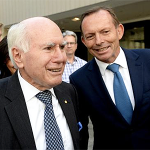
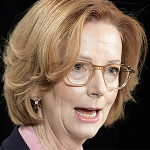
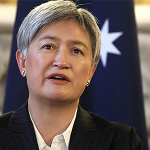
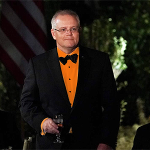
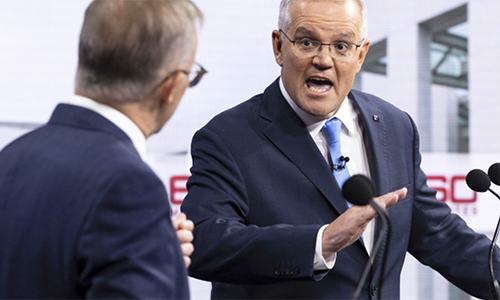
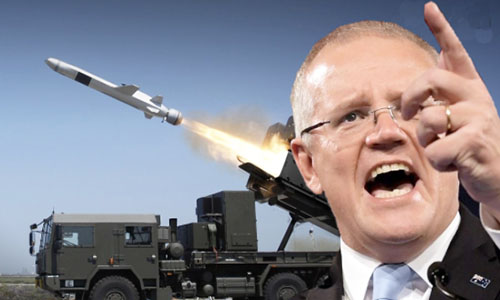
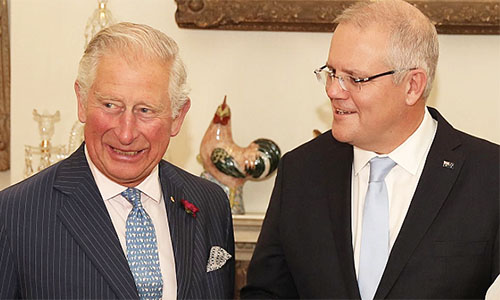
And there’s still absolutely no proof that our emissions of CO2 are driving ANY so-called and questionable global warming.
Australia must – MUST – have solid base-load power from solid, reliable coal-fired power stations using our own abundance of black coal!
Australia must – MUST – have now energy from our own HUGE gas fields and yes, – small modular, safe nuclear reactors.